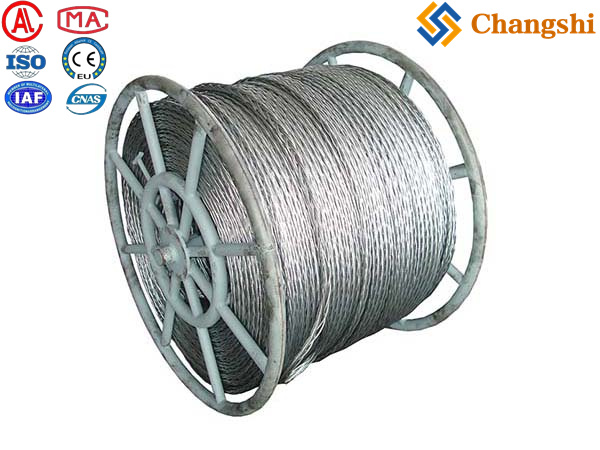
Anti-Twist Steel Wire Ropes for High Tension
Anti-twist steel wire ropes, also known as non-rotating or rotation-resistant wire ropes, are absolutely critical for high-tension pulling applications, especially in overhead power line stringing. Their unique construction is designed to prevent the rope itself from twisting or rotating under load, which is a common and dangerous issue with standard wire ropes.
Why Anti-Twist is Crucial for High Tension:
When a standard wire rope is subjected to a high tensile load, it naturally tries to "unlay" or rotate, similar to how a twisted rubber band tries to untwist. This rotation is highly problematic in conductor pulling for several reasons:
Conductor Damage: If the pulling rope twists, it can impart this twisting motion to the expensive and delicate conductors being pulled. This can lead to:
Bird-caging: Where the strands of the conductor separate and bulge outwards.
Kinking: Permanent bends or distortions in the conductor.
Damage to conductor surface: Scratches or nicks from contact with stringing blocks as it twists.
Twisting of bundled conductors: If pulling a bundle, uncontrolled rotation can twist the individual sub-conductors around each other, leading to improper sag, stresses, and potential damage.
Safety Hazard: A twisting rope can cause the entire pulling operation to become unstable. It can snag, jump out of sheaves, or cause unpredictable movements, endangering workers and equipment. The sudden release of torsional energy can be dangerous.
Inefficient Pulling: Twisting adds friction and can make it harder for the rope to run smoothly through the stringing blocks and over the puller's bullwheels.
Reduced Rope Lifespan: The internal stresses from twisting can lead to premature fatigue and failure of the rope itself.
Characteristics of Anti-Twist Steel Wire Ropes:
The non-rotating property is achieved through a specialized construction:
Multi-Layered Construction with Opposite Lays: Unlike standard ropes where all strands are laid in the same direction, anti-twist ropes have multiple layers of strands wound in opposing helical directions. For example, the inner layer might be laid in a left-hand direction, while the outer layer is laid in a right-hand direction.
Balanced Torque: This opposing lay cancels out the natural torque that develops when the rope is loaded, resulting in a net zero (or near-zero) rotation angle when under tension in a free state.
High Strength: Made from high-tensile galvanized steel wires to withstand the immense pulling forces.
Flexibility: Despite their complex construction, they are designed to be flexible enough to navigate through stringing blocks and over bullwheels without excessive bending stress.
Structure: Common structures include:
Hexagon with 12 strands or 18 strands: These are popular configurations for power line stringing ropes, offering excellent anti-twist properties and good flexibility.
19x7, 18x7, 35x7: These refer to specific core and outer strand configurations common in rotation-resistant ropes for various lifting and pulling applications.
Galvanized: Typically hot-dip galvanized for corrosion resistance, crucial for outdoor use in varying weather conditions.
Homogeneous Pressure Distribution: The design aims for even distribution of pressure among elementary wires to maximize efficiency and lifespan.

